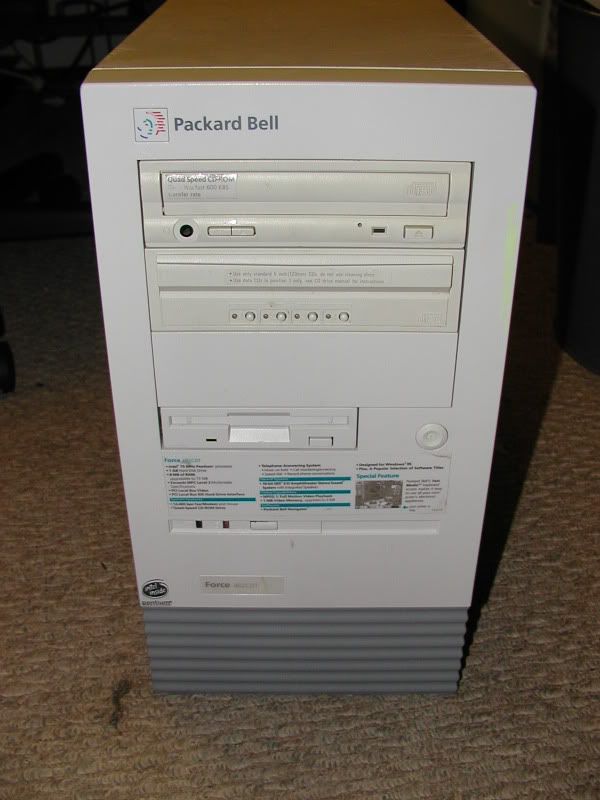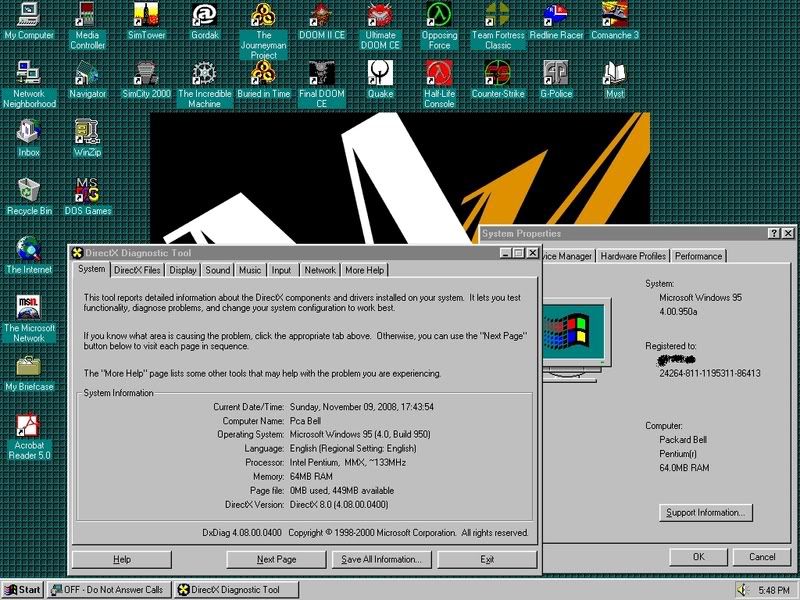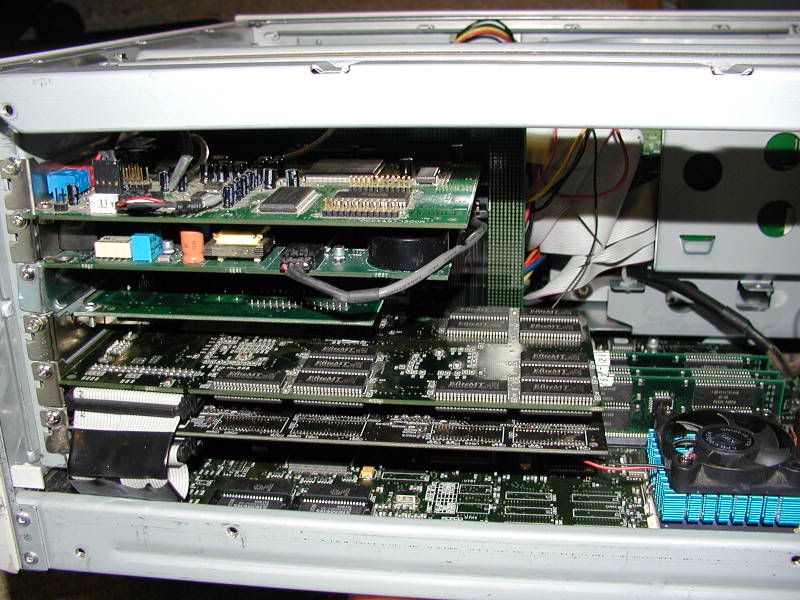commodorejohn
Veteran Member
So I recently nabbed a Packard Bell Multimedia D135 (Pentium @133MHz) from the recycle center to replace my 486, which went to a guy to whom it had childhood nostalgia value  Aside from PB's horrible legacy support (you may recall from my rant thread,) I'm actually a bit surprised at how generally decent of a machine it seems to be; I know they'd acquired a reputation for cheap retail crap in their later years, but this doesn't seem to be bad at all. (Aside from the wonky design decision to use a PCI/ISA riser card, which results in vertical card slots in a tower case, but I expect that's probably a cost-saving move to reuse a desktop board?)
Aside from PB's horrible legacy support (you may recall from my rant thread,) I'm actually a bit surprised at how generally decent of a machine it seems to be; I know they'd acquired a reputation for cheap retail crap in their later years, but this doesn't seem to be bad at all. (Aside from the wonky design decision to use a PCI/ISA riser card, which results in vertical card slots in a tower case, but I expect that's probably a cost-saving move to reuse a desktop board?)
Anyway, the PB680 board supports Socket 7 Pentiums at up to 233MHz; this one came with a P133, but from a recent cleanout at work I got ahold of some P150s, and one of them is now installed, overclocked to 166MHz and doing fine. (Sadly it's Intel-only, as I also acquired some Cyrix and AMD Socket 7 chips.) It didn't give me any trouble about RAM, either (aside from the old matching-SIMMs bit,) so it's loaded up with 96MB 60ns EDO DRAM, which should be way, way more than enough for my purposes. Add in a PCI S3 video card, NIC, and an ISA OPL4-based sound card (not quite as good as an SB16 for legacy support, but surprisingly good all the same,) and it's shaping up to be a nice solid DOS/Win98 box; I've got a hard drive en-route, and I'm looking forward to getting this all set up
Anyway, the PB680 board supports Socket 7 Pentiums at up to 233MHz; this one came with a P133, but from a recent cleanout at work I got ahold of some P150s, and one of them is now installed, overclocked to 166MHz and doing fine. (Sadly it's Intel-only, as I also acquired some Cyrix and AMD Socket 7 chips.) It didn't give me any trouble about RAM, either (aside from the old matching-SIMMs bit,) so it's loaded up with 96MB 60ns EDO DRAM, which should be way, way more than enough for my purposes. Add in a PCI S3 video card, NIC, and an ISA OPL4-based sound card (not quite as good as an SB16 for legacy support, but surprisingly good all the same,) and it's shaping up to be a nice solid DOS/Win98 box; I've got a hard drive en-route, and I'm looking forward to getting this all set up




